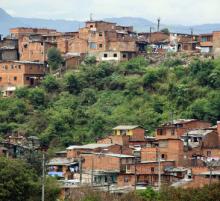
CDKN’s Climate and Development Outlook (November 2013) comes to grips with one of the hottest topics for discussion at the 19th Conference of the Parties to the United Nations Framework Convention on Climate Change in Warsaw, Poland: how developing countries will pay for climate compatible development and how the world can support them.
Climate finance links to all areas of CDKN’s work, including its support for climate compatible development policies and planning and disaster risk management. Whether it’s a case of building a country’s readiness to access and manage climate finance to catalyse climate-resilient, low-emissions investments, or innovating a disaster risk insurance scheme to protect the poorest, financial resources are often at the heart of the matter.
In three Latin American countries – Colombia, Peru and Chile – governments are developing scenarios for decoupling economic growth from greenhouse gas emissions, known as Mitigation Action Plans and Scenarios (MAPS). This publication shares early results of an initiative to identify funding sources for the low-carbon investments charted by these MAPS processes. It also shares the latest news from Rwanda’s dedicated climate and environment fund, a pioneering facility launched earlier this year.
CDKN encourages the development of innovative financing solutions, and Climate and Development Outlook reports on a promising initiative to deliver livelihood and climate benefits through Payments for Watershed Services in Bolivia. This initiative has recently been expanded beyond the pilot area to multiple river basins.
Drawing together results and lessons learned from CDKN’s climate finance portfolio, Climate and Development Outlook highlights some of the hurdles experienced by developing countries in accessing finance, the institutional barriers to managing climate finance flows, and the range of solutions that CDKN partners are exploring. In Honduras, Kenya and Bangladesh, one CDKN-funded research project is investigating the potential role of national ‘gatekeeper’ institutions that would channel climate finance effectively to the agriculture sector, in order to avoid fragmented approaches and address climate adaptation, mitigation and food security in an integrated way. Another research project has explored the potential for subnational institutions to gain direct access to international climate finance flows.
As well as assisting developing countries to access climate finance, CDKN supports the establishment of an international climate finance architecture that enables harmonised, effective and scaled-up financing for climate compatible development. Climate and Development Outlook reports on the recent activities of CDKN’s Climate Finance Advisory Service, which has been established to help poor and most climate-vulnerable countries to influence the development of the Green Climate Fund and other parts of the international climate finance architecture.

